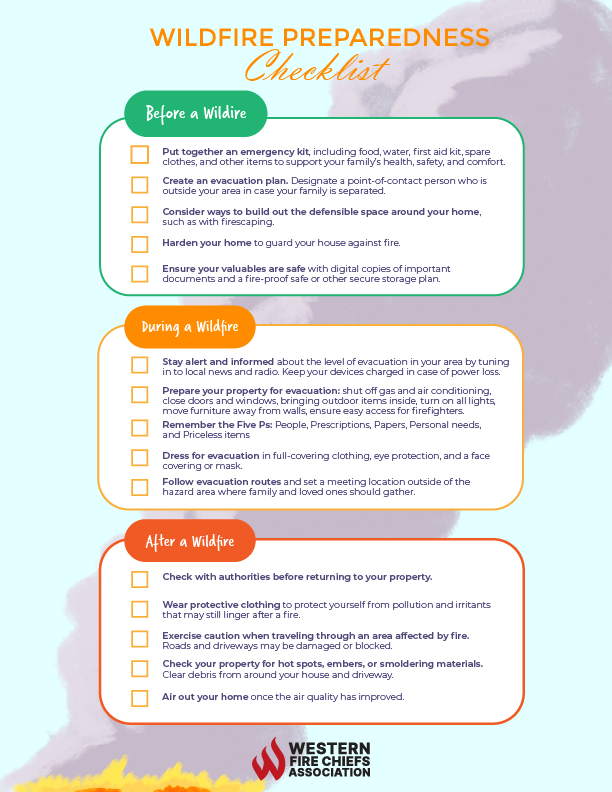Fire Pit Safety Tips
Stay safe around the campfire with tips from the Western Fire Chiefs Association. Learn essential precautions and practices for a worry-free outdoor campfire.
With this wildfire preparedness checklist, learn what to do before, during and after a wildfire with expert guidance from the Western Fire Chiefs Association (WFCA).
Published:April 4, 2023
Edited:March 1, 2024

With this wildfire preparedness checklist, learn what to do before, during, and after a wildfire with expert guidance from the Western Fire Chiefs Association (WFCA).
Wildfire season typically lasts from May to October, but practicing wildfire mitigation throughout the year protects yourself, your loved ones, and your property from fire. If a wildfire threatens your area, you can be ready to respond quickly. Once fire danger has passed, there are strategies to make sure your property is secure. Below is an action plan of steps you can take before, during, and after a wildfire to stay safe.

Stay safe around the campfire with tips from the Western Fire Chiefs Association. Learn essential precautions and practices for a worry-free outdoor campfire.
Discover essential firework safety tips to ensure a dazzling display without accidents. Learn how to celebrate responsibly with expert guidance from WFCA.
Explore the role of AI in wildfire prediction with guidance from the WFCA. Learn how advanced algorithms and data analytics enhance early detection and response.